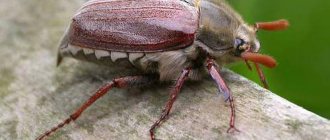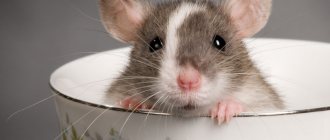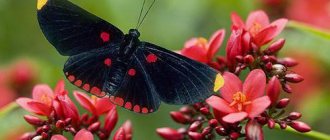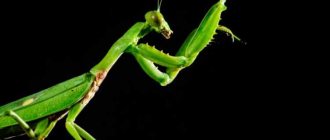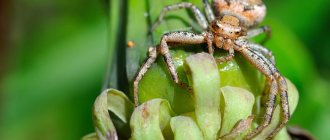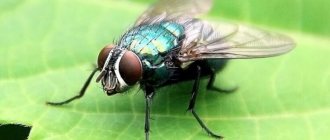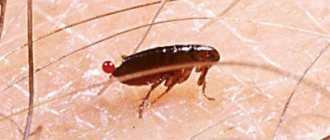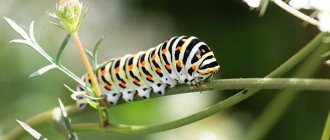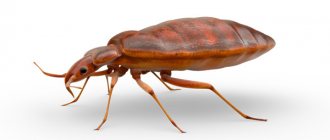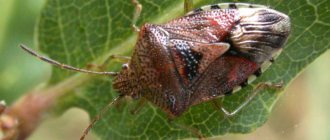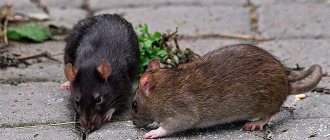a large group of insects characterized by the presence of two pairs of relatively large wings covered with scales (flat bristles). Together with moths, they belong to the order Lepidoptera, or Lepidoptera (from the Greek lepid - scale, pteron - wing). Daytime, or club-whiskered, butterflies differ from night-time, or different-whiskered, butterflies in many ways. The most noticeable of them are the shape of the antennae, the mechanism for connecting the front and hind wings, their color and position at rest, the shape of the body and the time of activity of the insect.
Also on topic:
NIGHT BUTTERFLIES
Daytime butterflies usually have more or less long thin antennae (antennae) ending in a club-shaped thickening; in nocturnal species, the antennae are most often feathery. They are also characterized by a special hook (bridle) of one or several setae at the root of the anterior edge of the hind wing, extending under a special outgrowth or group of scales on the underside of the fore wing and, as a result, fastening the wings to each other. In diurnal butterflies, this is done by the greatly expanded anterior edge of the hind wing, but there is no frenulum. Thanks to one or another connecting mechanism, both wings act as a single unit during flight. At rest, daytime butterflies fold their wings, raising them vertically above the body, while night butterflies either spread them to the sides or move them like a house on their backs. Daytime butterflies have a relatively slender body, brightly colored wings, and the period of activity occurs during daylight hours; Many nocturnal species are densely built, have discreet wings, and fly at dusk or at night.
Although the listed characters are generally typical for diurnal (club-whiskered) and nocturnal (different-whiskered) Lepidoptera, there are many exceptions. Known, for example, are moths with thin club-shaped antennae and day moths with antennas of a different type; the frenulum is absent in some primitive heterogeneous species, but is present in the males of one club-bearded species of the genus Euschemon
from the fathead family (Hesperiidae). There are club-whiskers, resting with outstretched wings, having a thick abdomen, dull coloring and active at night, and, conversely, hetero-whiskers with a slender body, bright coloring and daytime activity.
Structure.
Also on topic:
INSECTS
The body of an adult butterfly consists of three sections: head, thorax and abdomen. Large, almost hemispherical compound eyes and a pair of long segmented antennae (antennae) extending from the frontal part between the eyes are clearly visible on the head. The oral apparatus is located on the underside of the head. In daytime butterflies, this is a proboscis twisted into a spiral, formed by the outer lobes of the lower jaws connected to each other, but not fused (its two halves can be easily separated with a pin). Through the proboscis, the butterfly sucks out nectar using a bellows-like pharyngeal pump. Almost always, on the sides of the proboscis there are 3-segmented sensory organs densely covered with scales - the lower labial palps. The thorax consists of three segments: prothorax, midthorax and metathorax. Each bears a pair of legs, although in the large family of nymphalids (Nymphalidae) and in a number of other butterflies, their front pair is greatly reduced and is not used for locomotion. The mesothorax and metathorax bear a pair of wings. Like other insects, they are reinforced by a system of tubular structures called veins. Wing venation is an important systematic feature that helps establish relationships between different groups of butterflies. The abdomen is approximately cylindrical and consists of 10 segments, of which the last two or three are transformed into external genital appendages (genitalia). The shape of the latter varies widely and is often used as a diagnostic feature in identifying butterfly species.
The entire body, with the exception of the compound eyes, is entirely covered with hairs and bristles. Some of them are highly flattened and are called scales. The exposed surface of each scale is covered with miniature longitudinal grooves. The scales on the wings are arranged like tiles on a roof and are easily separated.
Peacock-eye "Atlas"
This butterfly was named after a hero from Ancient Greece who, according to legend, held the entire sky on his shoulders. The wingspan of this giant can reach 26 cm, and these species are found in Southeast Asia.
The beauty flies actively at night, feeding on the foliage of bushes or trees. At dusk, in the morning or as evening falls, Atlas is especially active, for which he is nicknamed the Prince of Darkness.
Peacock-eye Atlas, photo on hand
The Moscow Zoo also breeds the Peacock-Eyes - there you can admire its beauty to your heart's content. In particular, on the insect's wings, which are decorated with shades of yellow, pink and red. At the corners of the butterfly's hind wings there are transparent windows, and the front wings resemble the head of a snake in their shape, which scares away predators who encroach on their lives. The peacock eye, like some other individuals, has no mouth, so during its life (about 2 weeks), it lives only on the reserves accumulated during its life as a caterpillar. Did you know that you can breed butterflies at home? Read more about the home butterfly farm.
Male Atlas peacock-eyes are able to find a female for mating several tens of kilometers away. Moreover, the mating process takes place over several hours. It is worth noting that the process of reproduction is key in the life of females; they die immediately after they create offspring.
Coloring.
The coloring of butterflies can be divided into two types: pigment, due to the presence of coloring substances, and “structural,” depending on the arrangement and structure of the scales. In the latter case, it arises as a result of interference and diffraction of sunlight. Many variants of structural coloring, such as iridescence or the metallic shine of the wings, are explained by the superposition of thin layers of transparent plates on top of each other: the length of the light waves reflected by them depends on the angle of incidence of the rays. However, despite all the attractiveness of this color, pigmented ones are much more common.
LIFE CYCLE
After mating, the female butterfly lays eggs - sometimes one at a time, sometimes in groups - on or near a plant that serves as food for her larvae. After hatching, many larvae (caterpillars) eat the empty shell of the egg and only then switch to a vegetarian diet. They grow very quickly, molting 4 or 5 times, i.e. shedding the old shell (exoskeleton) that has become tight before reaching its maximum size. Most caterpillars feed on leaves, but some, for example from the family of fatheads, live in the stems, trunks or roots of plants, gnawing holes in them. The larvae of a number of bluegills (family Lycaenidae) are characterized by cannibalism, and very few of them are true predators, for example, North American myletines, which feed on aphids. Although caterpillars mostly live alone, sometimes, for example in Euphydryas phaeton
, they build extensive web nests together. In one of the species of Mexican whites, such a nest resembles a gourd. The caterpillars emerge from it at night to feed, and pupate inside, hanging upside down.
When the larva reaches its maximum size, it turns into a pupa. At this apparently resting stage, radical transformations occur in the insect's body, called metamorphosis. The larval organ systems disintegrate, and imaginal (typical of adult insects) structures are formed. Various moths usually pupate inside a cocoon, but most diurnal moths do not weave one. They make only a small “button” from the secretion of the silk glands on a branch or other support, and then “fasten” to it using a hook (creamaster), hanging upside down. In two families - swallowtails and similar whites - the pupa, although attached to the support by a cremaster, is held “upright” with the help of a belt of mulberries, which attracts it to a vertical branch. It is believed that this belt represents the remains of a cocoon that existed among their ancestors. Sometimes, mainly among swallowtails and most fatheads, pupation occurs in rough cocoons. Pupae without cocoons in butterflies are called chrysalids.
This stage lasts from a week to several years. Then an adult butterfly (imago) emerges from the pupa, which spreads its wings, pumping into them from the body cavity a blood-like liquid - hemolymph. The veins serve as “pipelines” for it. Eventually they thicken and harden, becoming the supporting elements of the wings. When they dry out, the hemolymph leaves them back: now the butterfly is ready to fly.
The duration of the life cycle varies and greatly depends on external conditions. In the Arctic, where the growing season is short, the full development of a butterfly can take several years and include diapause, i.e. period of winter rest (hibernation) of caterpillars. On the contrary, in temperate and tropical latitudes, many species, such as alfalfa yellowtail, have four or even five generations per year. In general, butterflies can hibernate at any stage of the life cycle, but the vast majority of lepidopterans of temperate latitudes hibernate as caterpillars or pupae.
Lifestyle
Be it a red butterfly, or a peacock's eye, they all share the same lifestyle. Basically, they do not stop flying either day or night. A small exception in this regard are moths, which prefer activity at certain times of the day.
There are butterflies that are able to eat while flying, while others simply love life in and around caves. But among them there is only one single butterfly that can live not only in the air, but also in water.
Habitats.
Butterflies are found on all continents, with the exception of Antarctica. They can be found just a few hundred kilometers from the North Pole, above the forest belt in the mountains, in deserts (especially in spring or after rainstorms), in impenetrable jungles and even far from land over the sea during migrations. Some species are distributed almost cosmopolitanly (all over the world), while the ranges of others are very small in area; for example, marigold Oeneis semidea
found only on the summit of Mount Washington (New Hampshire) and on several neighboring mountain peaks.
Migration.
In recent years, butterfly migration has attracted considerable attention from researchers. In North America, monarch migration has been studied by tagging individual individuals and then releasing them into the wild. The population of this species east of the Rocky Mountains migrates in the fall to its wintering grounds in central Mexico. Butterflies that begin their journey in southeastern Canada cover a distance of more than 2,900 km in a few months. Millions of them winter side by side in Mexico, mate in the spring and head back north. On the way, last year's individuals usually die, but their offspring, hatched from eggs laid by females on the way back, continue their journey north. To repopulate the United States and southern Canada, several such generations are needed every year. Monarchs living west of the Rocky Mountains fly to their wintering grounds on the central California coast. Here in their clusters only occasionally there are several tens of thousands of individuals.
CONNECTIONS WITH OTHER ANIMALS
Of all the groups of diurnal butterflies, blueberry caterpillars (family Lycaenidae) seem to deviate the most from the typical lepidopteran lifestyle. The predatory habits of miletines have already been mentioned above. In addition, the larvae of some bluegills live in a mutualistic (mutually beneficial) symbiosis with ants, which protect them from enemies in exchange for the sweet secretions of special glands, “honeydew.” Caterpillars of other bluebirds, in particular one Australian species, eat ant larvae. Some whites also cohabit with ants, supplying them with honeydew through tubular bristles connected to the glands that produce it.
Disguise
Camouflage in butterflies
Many caterpillars are able to take the form of twigs, twigs, and dried buds. Some can copy snakes, and very successfully: they inflate the front part of the body, the spots on the sides resemble eyes, and the outgrowths near the head look like a forked tongue. Other caterpillars are completely covered with long, stiff hairs that break off easily and can cause irritation to the skin and respiratory tract. Instead of coloring and poisonous hairs, some caterpillars create a camouflage around themselves: they glue leaves together, build a web cover with twigs, pieces of bark, and straws woven into it, and spend their entire lives in this shelter.
Interesting: Main species of daytime butterflies in Russia: list, photos, names, descriptions and videos
Parasites of butterflies.
At all stages of the butterfly's life cycle, they suffer from various parasites. Tiny hymenoptera lay their own eggs in their eggs. The development of larvae and pupae of the parasite occurs inside the butterfly egg, as a result of which it dies, and a completely different insect is born from its shell. Female ichneumonid parasites, also from the order Hymenoptera, search for caterpillars of certain butterflies: each type of parasite corresponds to a narrow circle of hosts. Having found suitable ones, they use a long ovipositor to lay their eggs either in their body under the cuticle, or on top, on the integument. In the latter case, the hatched larvae of the parasite gnaw their way inside the host and then feed on its tissues. Having completed their development, they either pupate in the body of the caterpillar or leave it to weave a cocoon for themselves.
Various dipterans, primarily hedgehog flies (family Tachinidae), also parasitize caterpillars. Adult females of many of their species lay eggs or larvae (in the case of viviparity) directly on the host - outside or (less often) inside its body. Other hedgehog flies lay eggs on the foliage of plants that feed the caterpillars. If they eat it, the larvae will hatch directly in the digestive tract of the host, and from there they will penetrate into his body cavity, where their further development will take place. Pupation occurs either inside the chrysalid or, if the caterpillar eventually dies, in the soil.
General characteristics of Lepidoptera
Lepidoptera are one of the most numerous orders of insects belonging to the phylum arthropods. A characteristic feature of all representatives of the order is four wings covered with a fine layer of modified scales. Their coloring creates bizarre and unique patterns on the surface.
Butterfly wing under a microscope
If we draw an analogy with other insects, then butterflies are a rather “young” group. The first representatives appeared with the flowering plants in the Cretaceous period.
Butterflies are distributed throughout the world, right up to the border of permafrost. Those species that live in temperate latitudes need wintering. More often, the insect survives the cold period in the form of a pupa, less often - in the adult stage. In the latter case, lepidoptera can migrate over vast distances, gathering in huge flocks.
Monarch Butterfly Migration
Common to our latitudes, urticaria, mourning grass, peacock's eye and buckthorn are able to survive the winter as adults without leaving their native lands. When spring comes, they will be ready to reproduce again.
The butterfly's two faceted eyes are capable of recognizing colors, but unlike humans, they see the world in the ultraviolet part of the spectrum. This feature allows zoologists to control the behavior of flying insects using special lamps and conduct observations at night.
How a butterfly sees the world
Butterflies are an important part of the ecosystem, since many plants are pollinated mainly or only by them. Caterpillars serve as food for many small animals and birds.
There is also a downside - the voracious larvae of butterflies can cause significant damage to vegetable crops and plants used by humans. In some cases, they can leave entire gardens and even forests without leaves.
Predators of butterflies.
The range of predators that attack butterflies is very wide - from humans to arthropods. Some wasps, having paralyzed the caterpillars with poison, drag them into their burrow to feed their offspring (they prepare “live canned food”). Other wasps feed their larvae chewed caterpillars. Relatively few arthropods attack adult butterflies, but dragonflies, mantises, blackflies and spiders are still dangerous predators for them.
Among vertebrates, the main enemies of butterflies are undoubtedly birds. They eat their larvae, pupae and adults. Caterpillars often form the main diet of chicks. Various species of rodents, lizards and frogs also feed on butterflies. In some countries, lepidoptera are eaten by people. In the Philippines they eat the belly of birdwing butterflies; in Mexico, the caterpillars of some species of fatheads are fried and preserved; Fried or candied silkworm pupae are considered a delicacy in South Asia.
Mimicry.
Natural selection makes it possible for quite appetizing species to take advantage of someone else's unpleasant taste. Any butterfly that looks inedible will get an additional chance to survive and leave offspring, i.e. will have a selective advantage. The North American “model-imitator” pair – the “tasteless” monarch ( Danaus plexippus)
) and the "delicious" viceroy (
Limenitis archippus
). Interestingly, they even belong to different subfamilies - Danainae and Nymphalinae, respectively.
Coloring.
Many butterflies do not imitate anyone and do not have a repulsive taste. They are protected by protective (camouflage, or cryptic) coloring. The Arctic Crix species is found in the Sierra Nevada Mountains (California) in two forms: the orange one is confined to areas with orange-brown basaltic rocks, and the light one is confined to outcrops of light granites. The larvae and pupae of many butterflies are very difficult to detect, as their green color makes them blend in with the foliage. Adult blackwings, having folded their wings, become very similar to dried leaves or pieces of bark. The most amazing example of such protective coloring is demonstrated by Asian leaf butterflies.
Other butterflies use a different kind of camouflage - “dismembering” coloring, as if breaking the outlines of the body due to a combination of contrasting spots. Some species have bright markings on their wings designed to divert the attention of predators from vital parts of the body. Probably, the “eyes” on the wings of many marigolds and nymphalids and the orange specks on them in some whites are used for this purpose.
Total number
The order Lepidoptera undoubtedly stands out among taxa of a similar rank in terms of species diversity. Lepidoptera are one of the largest groups of insects, including, as of August 2013, 158,570 species, including 147 fossil taxa. It is estimated that up to 100,000 species remain still unknown to science and, thus, the total number of lepidopteran species existing on the planet can be estimated at approximately 200,000 - 225,000 species. There are 2,166 genera and 8,879 species found in Russia.
Lepidoptera are very diverse, and most of their species are poorly studied. Some of the described species are known from finds from a single locality or even from a single specimen. A true estimate of the total number of species in existence will never be known because many species became extinct before they were discovered. The taxonomy of butterflies presented in various works reflects the different views of their authors and is, without a doubt, debatable.
There are disputes regarding the systematic position or the need to maintain the status of certain subspecies or species. DNA studies suggest that some of the currently known species must be separated. A well-known example is where the seemingly identical Colias alfacariensis and Colias hyale , previously thought to be one species, were split into two after significant differences in the structure of their caterpillars and pupae were discovered.

